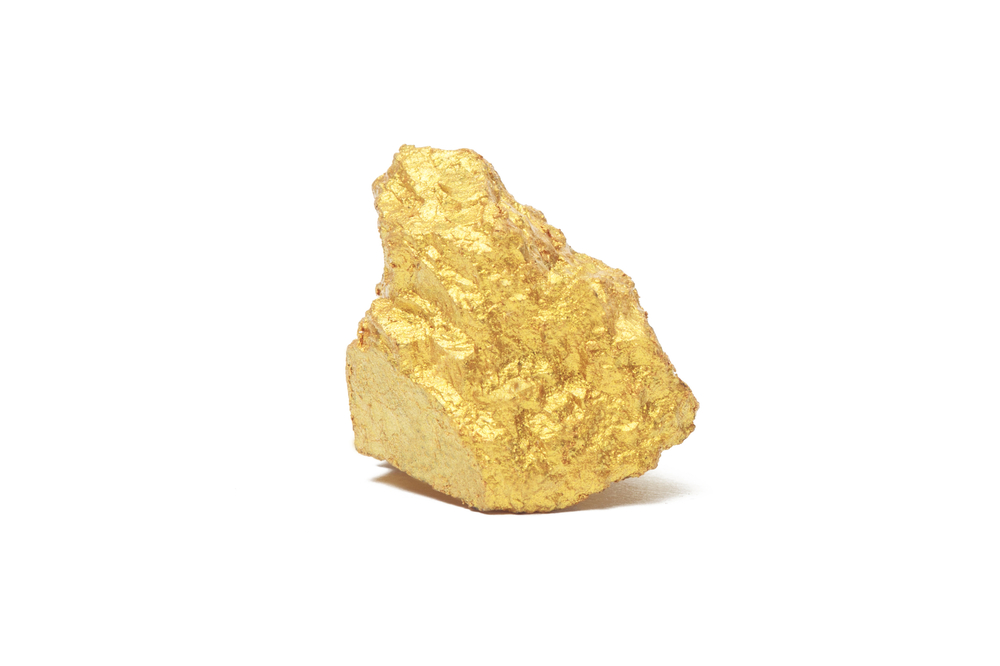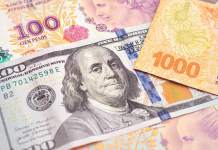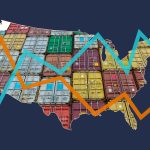As the world lurches through the 4th turning, we are heading toward $35,000 gold, but gold’s initial surge will be a wakeup call.
Gold Price Surge Will Be Unprecedented
April 10 (King World News) – Dr. Stephen Leeb:
The war in Ukraine, whether by design or ineptness, is speeding up what was always an inevitable transition to a new monetary system. What was evident before the war – the inadequacy of the existing fiat currency system to deal with fundamental resource scarcities – has become clearer than ever.
Initial Target For Gold $5,000+
It means that gold and other commodities should remain front and center for investors. My initial target for gold remains $5,000, and I expect most other commodities to move significantly higher as well. But gird yourself for volatility, which could be extreme.
I continue to hope that major nations will cooperate, allowing the transitions that lie ahead to unfold with a minimum of chaos. However, that will require the U.S. financial/technology colossus and the government entities that support it, including the Federal Reserve and the Treasury Department, to accept the need for a new monetary system as the backbone of a new global order. I hope they will, but it will require those who now pull the economic strings in the U.S. to accept a significant loss of power.
A carrot-and-stick approach, in which the choices are starkly laid out, may be persuasive. i.e., either accept a role in a new monetary system or face economic chaos, which would be the inevitable consequence of trying to rationalize massive debt in the context of a currency – the U.S. dollar – that has lost its role as the world’s primary reserve currency.
Gold’s Initial Surge Will Be A Wakeup Call
Gold’s initial surge will be the wakeup call. The carrot will be a new system designed in a way that lets the U.S. retain a significant say in monetary policy and resource distribution. I see an SDR-like basket of currencies backed by gold as the likeliest candidate. Also crucial will be a means of dealing with America’s massive external debt. Part of the solution may come from the involvement of prominent Americans – Elon Musk springs to mind – who favor a think-for-yourself approach.
The current situation has significant similarities to, but also some important differences from, 1973-74, when the OPEC oil embargo led to the worst-of-all worlds outcome of sharply rising inflation paired with a profound recession. That dismal combination made any efforts to address the situation a nightmare for policymakers. President Ford urged Americans to wear WIN buttons, standing for “whip inflation now.” It was a well-meaning idea to encourage greater savings, the deferral of large purchases, and other inflation-fighting tactics. The problem, of course, was that those tactics would dramatically worsen the recession. Alan Greenspan, then an economic advisor to Ford, described the WIN button effort as surreal and unbelievably stupid.
Fortunately, policymakers eventually made economic stimulation the order of the day. Moreover, the oil embargo was lifted in March 1974, and oil prices peaked midyear after a fourfold increase. By the end of 1974 inflation peaked above 12% and began a major descent. Still, not until mid-1982 and after another, relatively short-lived, oil crisis – stemming from the Iran-Iraq war – and in the wake of Volcker’s all-out assault on controlling the money supply, did inflation find a long-term home below 5%…
1970s vs Today
The similarity between then and today is the role of sharply rising commodity prices as the major catalyst for inflation. The big difference is that in the 1970s, there was a political solution to rising commodity prices, in the form of a deal between OPEC and the U.S. That brought down oil prices, whose sharp rise had led to rises in all commodities.
Today there are no easy political solutions because commodity scarcities aren’t political in origin. Rather they reflect real scarcities, made worse by the multiple ways in which all commodities are interconnected and dependent on one another. And today, as never in the past, the resource crisis is global in scope, requiring a global effort to solve it.
Still, whatever the differences between the 1970s and today, that decade offers the best guideposts to investors. The best-performing commodities were gold and oil, with nominal annualized gains of 33.1% and 26.4%, respectively. Broad-based commodity indexes gained about 11%. For real returns, subtract inflation of 8.1%. Meanwhile, real returns for financial assets as represented by the S&P 500 were near 0, while bonds were in the red by 2%. Cash also showed negative real returns. The only positives in real terms occurred in the areas leveraged to gold, in particular gold miners, along with stocks in the oil patch. All returns in the gold and oil sectors were near or above 20%.

$35,000 Gold
I derived my initial $5,000 target for gold by annualizing the nominal return for gold over the next three years. But given the differences between the 1970s and today, I wouldn’t be surprised if everything related to commodities performs even better this time around – albeit with sharper volatility – than in the earlier decade. i.e., the $5,000 target could be understated. By the same logic, my nominal 10-year target of $35,000 would likewise be understated. I also expect that, in contrast to the 1970s, commodities other than oil will show staggering gains as well. Meanwhile, most stocks are likely headed for negative returns. In the 1970s, some major stock groups, like retailers, on an inflation-adjusted basis lost more than half their value.
In other words, the years ahead could feature staggering gains and staggering losses, and it’s way too simplistic to say, as many do, that just as in the past, the rich will get a lot richer and the poor a lot poorer. At the end of the next 10 years, among investors, the rich will likely be those who understood and followed the correct macro path. Other once well-off investors may have no money left to invest.
The evidence for the extraordinary volatility that lies ahead is staring us in the face, though you have to look through a thick fog of propaganda to find it. On March 10, Treasury Secretary Janet Yellen commented:
“The Russian economy will be devastated as a consequence of what we’ve already done, but we…continue to consider further steps we can take.”
While it is still early days, that comment doesn’t seem particularly prophetic. The ruble, after cratering after sanctions were first announced, has more than doubled and is close to its pre-war level, currently trading above its 50- and 200-day moving averages – better than the euro. The Economist recently reported (Apr. 2) that the Russian economy is performing pretty well. Indeed, the magazine’s real-time data on items such as electricity consumption and railway loadings were ahead of last year’s levels. The article also noted that the OECD had reported that in the week of March 26, Russia’s GDP was about 5% higher than the year before.
Sanctions Not Going As Planned For US & EU
Things could change, but at this point it seems a gross understatement to say things for the U.S. and E.U. are not going as planned. The Economist did say a recession in Russia was probable by year end. But that forecast likely depends on the expected isolation of the Russian economy from other world economies. This expectation is not wholly consistent with a more recent Yellen comment in which she said she saw no need to sanction China for supporting Russia, adding that sanctions on China would come if China invaded Taiwan. I would rate the probability of China invading Taiwan anytime soon as somewhere between “highly unlikely” and zero. As my grandfather would have put it, ‘highly unlikely’ has left town.” If you are worried about China invading Taiwan, realize it would cripple the world’s semiconductor industry. It would be a tsunami for every developed economy. China, which I believe wants to cooperate with its Western rivals, would itself have to pay dearly for such an invasion.
Not that the sanctions on Russia haven’t had an impact – just not necessarily the ones we wanted. For starters, while they’ve exempted oil and gas, they still will mean far higher gas prices for some Western economies and particularly Germany, whose business relationship with Russian gas giant Gazprom has been severed. This leaves Germany needing to deal directly with Moscow to fill contracts, which will result in Germans paying much more for gas than they otherwise would have done.
In general, European countries are being hurt by the severing of Russian ties that were dictated by the sanctions. A recent headline in The New York Times business section noted:
“European companies are suffering collateral damage from the invasion of Ukraine in the form of supply shortages, rising energy costs, and customers who can’t pay.”
Sanctions Have Made A Terrible Situation Worse
Sanctions have only made a terrible situation worse, with European countries probably suffering more than Russia. Indeed, you can argue that the sanctions have created a vicious circle, as the euro has declined versus the dollar. With most commodities still priced in dollars, it means that rapidly rising commodity prices are being magnified in Europe because of its weakening currency.
Perhaps most worrisome is that the economic backlash is having political consequences. In France, for example, the reelection of Macron, which prior to the war was considered a near certainty, is now a much closer contest between Macron and Le Pen. Le Pen has softened her image to make herself more palatable to voters. A shift to the right in political sentiment in Europe would mean Europe becoming more pro-Russia and anti-U.S.
Overall, then, I see the sanctions as having backfired. And increasingly I see the U.S. as acting more out of desperation than clear-headedness. For example, releasing huge amounts from our oil reserves is idiotic. High oil prices are not an ephemeral affair, and far from releasing oil, we should be adding to our reserves – especially given that OPEC could easily counter the release by reducing production.
My hope is the U.S. will come to grips with the reality that it lacks the tools to deal with fundamental commodity scarcities. In today’s world, having a say in commodity distribution is far more important than being able to print all the money you want. You don’t have to connect too many dots to realize that the only real option, short of engineering a severe and possibly catastrophic recession or starting a nuclear war, is to accept a new monetary system along the lines I have suggested. The good news is that, as I’ve argued before, it’s a path that offers the best chance of restoring the kind of genuine American greatness we enjoyed in the past but have squandered in recent decades.
But whether the U.S. sees the light or not about cooperating in a new monetary system, gold and other commodities are headed for the stratosphere as many other assets crash and burn. Yes, there could be extreme volatility, but for investors, it doesn’t seem like a hard choice to make.


















